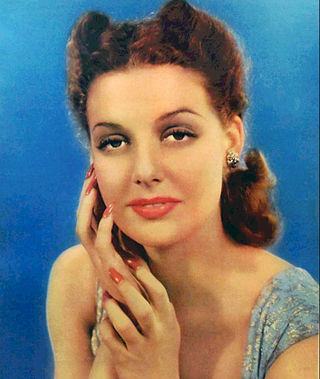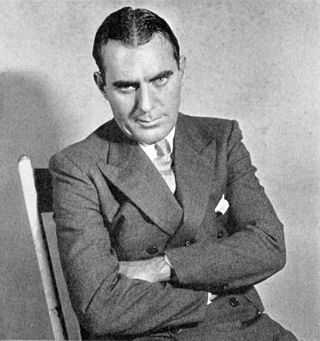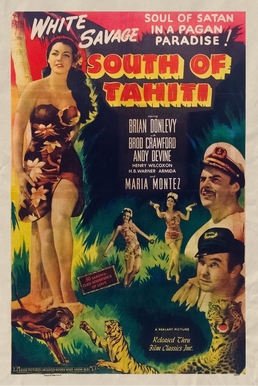
William Broderick Crawford was an American actor. He is best known for his portrayal of Willie Stark in the film All the King's Men (1949), which earned him an Academy Award and a Golden Globe Award. Often cast in tough-guy or slob roles, he later achieved recognition for his starring role as Dan Mathews in the crime television series Highway Patrol (1955–1959).

Sydney Hughes Greenstreet was a British and American actor. While he did not begin his career in films until the age of 61, he had a run of significant motion pictures in a Hollywood career lasting through the 1940s. He is best remembered for the three Warner Bros. films - The Maltese Falcon (1941), Casablanca (1942), and Passage to Marseille (1944) - with both Humphrey Bogart and Peter Lorre. He portrayed Nero Wolfe on radio during 1950 and 1951. He became an American citizen in 1925.

Clara Lou "Ann" Sheridan was an American actress and singer. She is best known for her roles in the films San Quentin (1937) with Humphrey Bogart, Angels with Dirty Faces (1938) with James Cagney and Bogart, They Drive by Night (1940) with George Raft and Bogart, City for Conquest (1940) with Cagney and Elia Kazan, The Man Who Came to Dinner (1942) with Bette Davis, Kings Row (1942) with Ronald Reagan, Nora Prentiss (1947), and I Was a Male War Bride (1949) with Cary Grant.

George Raft was an American film actor and dancer identified with portrayals of gangsters in crime melodramas of the 1930s and 1940s. A stylish leading man in dozens of movies, Raft is remembered for his gangster roles in Quick Millions (1931) with Spencer Tracy, Scarface (1932) with Paul Muni, Each Dawn I Die (1939) with James Cagney, Invisible Stripes (1939) with Humphrey Bogart, and Billy Wilder's comedy Some Like It Hot (1959) with Marilyn Monroe and Jack Lemmon; and as a dancer in Bolero (1934) with Carole Lombard and a truck driver in They Drive by Night (1940) with Ann Sheridan, Ida Lupino and Bogart.

Garson Kanin was an American writer and director of plays and films.

Edward Santree Brophy was an American character actor and comedian, as well as an assistant director and second unit director during the 1920s. Small of build, balding, and raucous-voiced, he frequently portrayed dumb cops and gangsters, both serious and comic.

William Joseph Patrick O'Brien was an American film actor with more than 100 screen credits. Of Irish descent, he often played Irish and Irish-American characters and was referred to as "Hollywood's Irishman in Residence" in the press. One of the best-known screen actors of the 1930s and 1940s, he played priests, cops, military figures, pilots, and reporters. He is especially well-remembered for his roles in Knute Rockne, All American (1940), Angels with Dirty Faces (1938), and Some Like It Hot (1959). He was frequently paired onscreen with Hollywood star James Cagney. O'Brien also appeared on stage and television.

Anne Gwynne was an American actress who was known as one of the first scream queens because of her numerous appearances in horror films. Gwynne was also one of the most popular pin-ups of World War II. She is the maternal grandmother of actor Chris Pine.

Bolero is a 1934 American pre-Code musical drama film directed by Wesley Ruggles and starring George Raft and Carole Lombard. The Paramount production was a rare chance for Raft to play a dancer, which had been his profession in New York City, rather than portraying a gangster. The film takes its title from the Maurice Ravel composition Boléro (1928). The supporting cast includes William Frawley, Ray Milland and Sally Rand.

John Nicholas "Dick" Foran was an American actor and singer, known for his performances in Western musicals and for playing supporting roles in dramatic pictures. He appeared in dozens of movies of every type during his lengthy career, often with top stars leading the cast.

Quick Millions is a 1931 pre-Code crime film directed by Rowland Brown and starring Spencer Tracy, Marguerite Churchill, Sally Eilers, and featuring George Raft as the sidekick with a solo eccentric dance performance.

Ralph Byrd was an American actor. He was most famous for playing the comic strip character Dick Tracy on screen, in serials, films and television.

Rumba is a 1935 American musical drama film starring George Raft as a Cuban dancer and Carole Lombard as a Manhattan socialite. The movie was directed by Marion Gering and is considered an unsuccessful follow-up to Raft and Lombard's smash hit Bolero the previous year.

The Glass Key is a 1942 American film noir based on the 1931 novel of the same name by Dashiell Hammett. The picture was directed by Stuart Heisler starring Brian Donlevy, Veronica Lake and Alan Ladd. A successful earlier film version starring George Raft in Ladd's role had been released in 1935. The 1942 version's supporting cast features William Bendix, Bonita Granville, Richard Denning and Joseph Calleia.
Robert E. Kent was an American film writer and film producer.

A Dangerous Profession is a 1949 American film noir directed by Ted Tetzlaff, written by Warren Duff and Martin Rackin, and starring George Raft, Ella Raines and Pat O'Brien. The film was one of a series of thrillers in which Raft appeared in the late 1940s, with decreasing commercial results.

Paul Porcasi was an Italian actor. He appeared in more than 140 films from 1917 to 1945.

Footsteps in the Dark is a 1941 American comedy mystery film directed by Lloyd Bacon and starring Errol Flynn, Brenda Marshall and Ralph Bellamy. It was produced and distributed by Warner Bros. Flynn plays a novelist and amateur detective investigating a murder. It takes its title from the 1935 play Footsteps in the Dark by Ladislas Fodor and also used material from the 1937 play Blondie White by Jeffrey Dell.

South of Tahiti is a 1941 American south seas adventure film directed by George Waggner and starring Brian Donlevy, Broderick Crawford and Andy Devine. It helped launch fourth-billed Maria Montez as a pin-up star. The response was such that Universal Pictures then cast her in Arabian Nights.

Adrian Michael Morris was an American actor of stage and film, and a younger brother of Chester Morris.


















